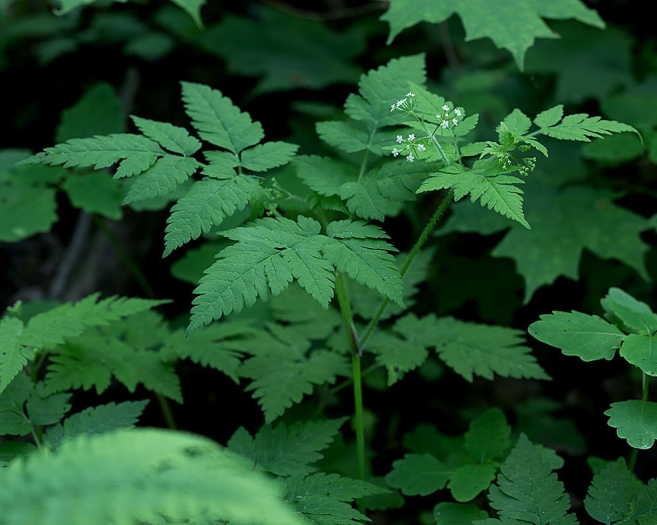Clayton’s Sweetroot
(Osmorhiza claytonii)
Clayton’s Sweetroot (Osmorhiza claytonii)
/
/

crgillette
CC BY 4.0
























Estimated Native Range
Summary
Clayton’s sweetroot is valued for its aromatic properties and is sometimes used in native plant gardens or naturalized areas. It is relatively low-maintenance, preferring shaded conditions and moist, well-drained soil. While not typically used for ornamental purposes due to its subtle flowers, it can be a beneficial addition to woodland gardens or naturalized areas, providing ecological support for pollinators. It is also of interest for its historical use in traditional medicine. The seeds of Osmorhiza claytonii are adapted for dispersal by attaching to animals with their barbed structures. Gardeners should be aware that in ideal conditions, it may self-seed and spread within the garden.CC BY-SA 4.0
Plant Description
- Plant Type: Herb
- Height: 1-3.3 feet
- Width: 1-2 feet
- Growth Rate: Moderate
- Flower Color: White
- Flowering Season: Spring, Summer
- Leaf Retention: Deciduous
Growth Requirements
- Sun: Full Shade
- Water: Medium
- Drainage: Medium
Common Uses
Butterfly Garden, Edible*Disclaimer: Easyscape's listed plant edibility is for informational use. Always verify the safety and proper identification of any plant before consumption., Low Maintenance
Natural Habitat
native to the rich, deciduous forests of Eastern North America, particularly thriving on wooded slopes and in the understory where the soil is moist and fertile
Other Names
Common Names: Clayton’s Sweetroot, Bland Sweet Cicely, Hairy Sweet Cicely, Clayton’s Sweet Cicely, Sweet Javril, Woolly Sweet Cicely
Scientific Names: , Osmorhiza claytonii, Chaerophyllum claytonii, Chaerophyllum dulce, Chaerophyllum dulce, Myrrhis brevistylis, Myrrhis claytonii, Myrrhis dulcis, Myrrhis fumarioides, Osmorhiza aristata var. brevistylis
GBIF Accepted Name: